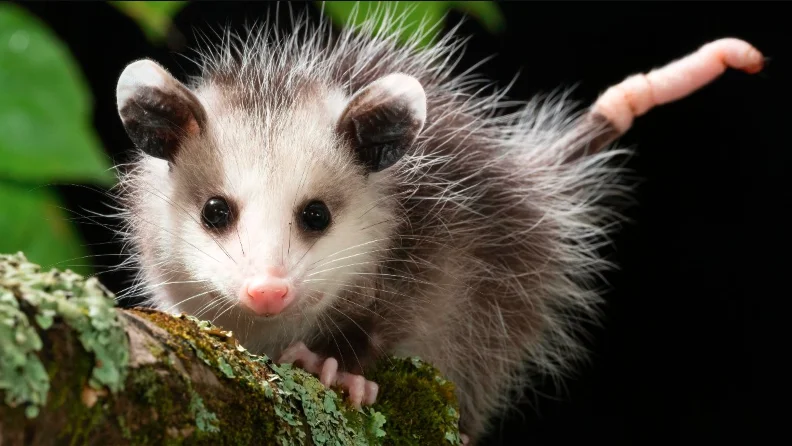Introduction
Tñacuache, known in English as the opossum, is a unique and often misunderstood creature found across the Americas. Its fascinating traits and behaviors make it a subject of curiosity for those who encounter it. In this comprehensive guide, we will explore everything you need to know about the tñacuache, from its physical characteristics to its behavior, role in the ecosystem, and cultural significance. By the end, you will have a deeper appreciation for this resilient and adaptable creature.
What is a Tñacuache?
The tñacuache (Didelphis virginiana) is a species of marsupial native to North and South America. It is commonly referred to as the Virginia opossum in the United States and is one of the few marsupials found in North America. Tñacuaches are nocturnal animals, meaning they are most active at night. They are often misunderstood and feared, but they play an important role in the ecosystem.
Key Characteristics of Tñacuaches
Here are some key features that make the tñacuache distinct from other animals:
- Size: Tñacuaches range in size from 15 to 30 inches in length, including their prehensile tail. Adult tñacuaches typically weigh between 4 and 14 pounds.
- Appearance: These creatures have white faces with dark rings around their eyes, a grayish body, and a long, scaly tail. Their tail is prehensile, meaning they can use it to grasp and balance.
- Lifespan: In the wild, tñacuaches have a lifespan of 2 to 4 years, though many do not survive to adulthood due to predators and accidents.
- Habitat: Tñacuaches are highly adaptable creatures and can thrive in various environments, including forests, woodlands, urban areas, and even suburban backyards.
Physical Features of Tñacuaches
| Feature | Description |
| Size | 15 to 30 inches in length, tail included |
| Weight | 4 to 14 pounds depending on age and environment |
| Fur Color | Grayish fur with a white face and dark eyes |
| Tail | Prehensile and scaly, used for grasping and balance |
| Feet | Five toes on each foot, adapted for climbing and holding onto tree branches |
The Life Cycle of a Tñacuache
Tñacuaches, like all marsupials, have a unique reproductive system that sets them apart from placental mammals. The development of the young in tñacuaches occurs in several stages, with significant differences compared to other mammals.
Reproduction and Development
- Mating Season: The mating season for tñacuaches usually occurs during the warmer months, typically from January to October.
- Gestation: The gestation period for a tñacuache is very short, lasting only 12 to 13 days. After this brief gestation period, the female gives birth to underdeveloped young.
- Pouch Development: The tiny, underdeveloped babies crawl into the mother’s pouch immediately after birth. This pouch is where the babies continue to develop and grow.
- Weaning and Independence: After about 2 months, the babies begin to venture out of the pouch, and after 3 to 4 months, they are weaned from their mother’s milk. They will continue to stay with their mother until they are fully independent.
Stages of Development
- Birth: The young are born at a very early stage of development, weighing less than a gram and measuring about the size of a peanut.
- Pouch: The babies remain in the pouch for around 2 months, where they develop further.
- Weaning: After 3 to 4 months, the babies are fully weaned and begin to explore their environment.
- Independence: By 5 to 6 months, the young are fully independent and leave their mother to start their own lives.
Tñacuache Behavior and Diet
Tñacuaches are omnivores, which means they have a varied diet that includes both plant and animal matter. Their opportunistic feeding habits help them survive in various environments, from forests to urban areas.
Diet of a Tñacuache
Here is a list of common foods that tñacuaches eat:
- Fruits: Apples, berries, and other fruits are a significant part of their diet.
- Insects: Beetles, grasshoppers, and other insects are common food sources for tñacuaches.
- Small Animals: They may also eat small rodents, birds, and eggs when available.
- Carrion: Tñacuaches are known to scavenge for dead animals, helping them clean up the environment.
Tñacuache’s Nocturnal Habits
Tñacuaches are nocturnal animals, which means they are most active at night. This behavior helps them avoid predators, as many of their natural predators, such as foxes and hawks, are diurnal (active during the day).
- Foraging: During the night, tñacuaches forage for food, using their sharp sense of smell and hearing to detect prey and food sources.
- Sleeping: During the day, tñacuaches sleep in hollow logs, tree cavities, or abandoned burrows. They are solitary creatures and prefer to live alone.
The Role of Tñacuaches in the Ecosystem
Tñacuaches play an important role in maintaining the balance of their ecosystem. As opportunistic feeders and scavengers, they help control the populations of insects, rodents, and other small animals.
Pest Control
Tñacuaches are natural pest controllers, feeding on insects, rodents, and other small creatures that might otherwise overrun agricultural or urban areas. They help reduce the number of ticks and other disease-carrying pests, making them beneficial to both farmers and homeowners.
- Rodent Control: By feeding on small rodents, tñacuaches help limit the spread of diseases carried by rodents, such as hantavirus and Lyme disease.
- Tick Control: Tñacuaches feed on ticks and other parasites, reducing the prevalence of tick-borne illnesses like Lyme disease.
Tñacuaches as Clean-Up Crew
Tñacuaches are scavengers, often eating carrion (dead animals). This helps keep their environment clean by consuming organic waste. In this way, tñacuaches contribute to a healthier ecosystem by recycling nutrients and preventing the spread of disease from decaying carcasses.
Reducing Insect Populations
The diet of tñacuaches also includes insects like beetles, grasshoppers, and other pests that can damage crops. By feeding on these insects, tñacuaches help maintain the balance of insect populations in the wild.
Interesting Facts About Tñacuaches
Tñacuaches are full of surprising traits that make them unique in the animal kingdom.
- Prehensile Tail: Tñacuaches are one of the few mammals with a prehensile tail. They can use their tail to grasp branches, providing extra support as they move through trees or navigate the environment.
- “Playing Possum”: When threatened, tñacuaches often “play dead” or “play possum,” which involves falling limp and emitting a foul-smelling odor to deter predators.
- Survival Skills: Tñacuaches are highly adaptable creatures, able to survive in a wide range of environments, from forests to urban areas.
Tñacuache in Culture
The tñacuache is not only an interesting animal from a biological perspective but also holds cultural significance in various regions. In some parts of Mexico, the tñacuache is seen as a symbol of resilience and adaptability.
Tñacuache in Mexican Folklore
In Mexican folklore, the tñacuache is sometimes portrayed as a trickster, known for its cleverness and ability to outwit other animals or humans. These stories emphasize its survival instincts and its ability to thrive in difficult circumstances.
- Symbol of Resilience: The tñacuache is often seen as a symbol of perseverance, able to survive in harsh conditions that other animals might not.
- Trickster Figure: In some traditional tales, the tñacuache is a character that uses its wit to overcome challenges, much like other trickster figures in folklore.
Conclusion
The tñacuache, or opossum, is a fascinating and unique animal that plays an important role in its ecosystem. From its distinctive appearance and behavior to its role in pest control and cultural significance, the tñacuache is a creature worthy of appreciation. Whether it is playing dead to avoid predators or helping to maintain the balance of its environment, the tñacuache proves to be a resilient and adaptable animal that continues to thrive in a variety of habitats
FAQs About Tñacuaches
What is a tñacuache?
A tñacuache, also known as an opossum, is a marsupial found in the Americas, recognized for its adaptability and nocturnal behavior.
What do tñacuaches eat?
Tñacuaches are omnivores and feed on fruits, insects, small animals, and carrion.
How do tñacuaches protect themselves?
Tñacuaches protect themselves by playing dead and emitting a foul odor to deter predators.
Are tñacuaches dangerous to humans?
No, tñacuaches are shy creatures that avoid humans and are not dangerous.
How long do tñacuaches live?
In the wild, tñacuaches live for 2 to 4 years, although many do not survive to adulthood.
What role do tñacuaches play in the ecosystem?
Tñacuaches help control insect and rodent populations, and their scavenging behavior helps clean up the environment.







